Howard D. Goodfellow, Esko Tahti0122896769, 9780122896767, 9780585470627
Table of contents :
Contents……Page 6
8.4 Two–Zone Model Description……Page 0
1.3 Air Technology Systems……Page 37
1.4.1 History and State of the Art……Page 38
1.4.2 Structure of the DGB Book Fundamentals……Page 39
2.1.1 Zones……Page 43
2.1.2 Industrial Air Conditioning Systems……Page 44
2.1.5 Definitions of Types of Air……Page 47
3.1 Introduction……Page 49
3.2 Design Methodology Description……Page 51
3.3 Given Data……Page 57
3.6 Target Level Assessment……Page 58
3.7 Source Description……Page 61
3.8 Calculation of Local Loads……Page 62
3.9 Local Protection……Page 63
3.10 Calculation of Total Loads……Page 66
3.11 Selection of System……Page 68
3.12 Selection of Equipment……Page 70
3.13 Detailed Design (Engineering)……Page 71
3.13.1 Subtask 1: Ventilation System……Page 72
3.13.4 Subtask 4: Commissioning Plan……Page 73
4 Physical Fundamentals……Page 75
4.1.1 Fluid Properties……Page 76
4.1.2 Constants for Water……Page 82
4.1.4 Properties of Air and Water Vapor……Page 83
4.1.5 Liquid Flow……Page 85
4.2.2 Fundamentals……Page 98
4.2.3 Water Vapor Pressure in the Presence of Air……Page 102
4.2.4 Vapor Pressure of Water and Ice and Calculation of Humid Air State Values……Page 105
4.2.5 Construction of Mollier Diagram……Page 108
4.2.6 Determination of Air Humidity……Page 110
4.2.7 State Changes of Humid Air……Page 125
4.2.8 Example of Cooling Tower Dimensioning……Page 129
4.3.1 Different Forms of Heat Transfer……Page 137
4.3.2 Analogy with the Theory of Electricity……Page 140
4.3.3 Heat Conduction……Page 144
4.3.4 Heat Convection……Page 147
4.3.5 Thermal Radiation……Page 152
4.3.6 Mass Transfer Coefficient……Page 161
4.3.7 Heat and Mass Transfer Differential Equations in the Boundary Layer and the Corresponding Analogy……Page 165
4.3.8 Diffusion Through a Porous Material……Page 172
4.3.9 Example of Drying Process Calculation……Page 175
4.3.10 Evaporation from Multicomponent Liquid System……Page 180
4.4.2 Common Water Impurities……Page 182
4.4.3 Cooling Water Systems……Page 186
4.4.4 Water Treatment……Page 189
5 Physiological and Toxicological Considerations……Page 207
5.1.1 Introduction……Page 208
5.1.2 Primary Factors……Page 209
5.1.3 Body Control Temperatures……Page 213
5.1.4 Clothing……Page 215
5.1.5 Comfort Zones……Page 218
5.1.6 Spatial and Temporal Nonuniformity……Page 221
5.1.7 Thermal Radiation and Operative Temperature……Page 222
5.2.2 Anatomical Overview……Page 229
5.2.3 Ventilation Patterns……Page 240
5.2.4 Mucociliary Clearance……Page 248
5.2.5 Airway Heat and Water Vapor Transport……Page 251
5.2.6 Endogenous Ammonia Production……Page 254
5.2.7 Respiratory Defense Mechanisms……Page 255
5.3.1 Introduction and Background……Page 273
5.3.2 Exposure to Chemical Substances……Page 289
5.3.3 Kinetics of Chemical Compounds……Page 297
5.3.4 Toxic Effects of Chemical Compounds……Page 310
5.3.5 Exposure Assessment……Page 354
5.3.6 Toxicity, Risks, and Risk Assessment……Page 360
5.4.2 Ventilation Noise as an Environmental Problem……Page 379
5.4.3 Physical Characteristics……Page 380
5.4.5 Effects on Humans……Page 381
5.4.6 Measures……Page 385
5.4.7 Exposure Limits……Page 387
6 Target Levels……Page 389
6.1.1 Introduction……Page 390
6.1.2 Use of Target Levels……Page 391
6.1.3 Combination of Target Levels and Design Methodology……Page 393
6.2.1 Introduction……Page 396
6.2.2 Setting OELs……Page 398
6.2.3 Types of OELs……Page 399
6.2.4 Assessment of Exposure to Chemical Agents……Page 402
6.3.1 Introduction……Page 407
6.3.2 The Thermal Environment……Page 408
6.3.3 Moderate Thermal Environments……Page 410
6.3.4 Hot Environments……Page 416
6.3.5 Cold Environments……Page 419
6.3.6 Supporting Standards……Page 422
6.3.7 Measurements on Individuals……Page 426
6.3.10 Examples……Page 429
6.4.1 Introduction……Page 431
6.4.2 Grounds for Assessing TLs for Industrial Air Quality……Page 433
6.4.3 Target Levels for Common Contaminants……Page 436
6.4.4 Use of TLs……Page 438
6.5.1 Introduction……Page 439
6.5.2 Ventilation Parameters That Influence the Building Construction and Process Design……Page 441
6.5.3 Building and Process Parameters that Influence the Ventilation System……Page 444
6.5.4 Summary……Page 447
7 Principles of Air and Contaminant Movement Inside and Around Buildings……Page 449
7.1 Introduction……Page 451
7.2.1 Classification……Page 452
7.2.2 Nonbuoyant Contaminant Sources……Page 454
7.2.3 Emission from Heat Sources……Page 457
7.2.4 Sources of Dust……Page 460
7.2.5 Sources of Moisture Emission……Page 463
7.2.6 Explosive Gases, Vapors, and Dust Mixtures……Page 464
7.3.1 Factors Influencing Room Airflow……Page 467
7.3.2 Airflow in Rooms Dominated by Supply Jets……Page 468
7.3.3 Airflow Dominated by Thermal Plume……Page 470
7.3.4 Unidirectional Flow……Page 474
73.5 Spiral Vortex Flow……Page 475
7.3.6 Airflow Created by Exhaust Performance……Page 476
7.4.2 Classification……Page 480
7.4.3 Isothermal Free Jet……Page 482
7.4.4 Non-isothermal Free Jets……Page 490
7.4.5 Jets in Confined Spaces……Page 510
7.4.6 Jet Interaction……Page 528
7.5.1 Natural Convection Flows……Page 551
7.5.2 Nonconfined and Nonstratified Environments……Page 552
7.5.3 Plume Interaction……Page 562
7.5.4 Plumes in Confined Spaces……Page 566
7.5.5 Plumes in Rooms with Temperature Stratification……Page 567
7.6.1 Introduction……Page 575
7.6.3 Air Movement Near Sinks……Page 577
7.7.1 Introduction……Page 587
7.7.2 Types of Air Curtains and Their Applications……Page 588
7.7.3 Principle of Calculation……Page 592
7.7.4 Operation of the Air Curtain……Page 599
7.7.5 Design of an Air Curtain Device……Page 600
7.8.1 Airflow around Buildings……Page 605
7.8.2 Infiltration and Exfiltration……Page 613
7.8.3 Airflow through Large Openings and Gates……Page 619
7.8.4 Controlled Airflow through an Envelope: Principles of Natural Ventilation……Page 621
7.8.5 Air and Contaminant Movement between Building Zones……Page 625
8 Room Air Conditioning……Page 635
8.1 Introduction……Page 637
8.2.1 Industrial Process Description……Page 638
8.2.2 Requirements for Indoor Environment……Page 639
8.2.3 Architectural Design for an Industrial Enclosure……Page 641
8.2.5 Load Calculation……Page 642
8.2.6 Characterization of Room Airflow and Thermal Conditions Based on Industrial Production Process and Envelope……Page 644
8.3.1 Introduction……Page 645
8.3.3 Central Recirculation System……Page 646
8.3.4 Local Recirculation……Page 648
8.3.5 Conclusion……Page 651
8.4.1 Zonal Models……Page 652
8.4.3 Two-Zone Model Calculation……Page 653
8.4.4 Two-Zone Model Solutions……Page 657
8.5.1 Ventilation Efficiency Indices……Page 658
8.5.2 Contaminant Removal Effectiveness……Page 659
8.5.3 Contaminant Removal Efficiency……Page 660
8.5.5 Air Distribution Performance Index……Page 661
8.6.1 Introduction……Page 662
8.6.2 Classification for Room Air Conditioning Strategies……Page 663
8.6.3 Piston Strategy……Page 664
8.6.4 Stratification Strategy……Page 666
8.6.5 Zoning Strategy……Page 668
8.6.6 Mixing Strategy……Page 669
8.6.7 Application of the Strategy in System Selection……Page 671
8.6.8 Summary……Page 672
8.7.2 Mixing Air Distribution……Page 673
8.7.4 Displacement Flow……Page 681
8.7.5 Zonal Air Distribution……Page 682
8.8.1 Exhausts in Nonstratified Room Air……Page 690
8.8.2 Exhaust of Buoyant Contaminants……Page 691
8.8.4 Location of General Exhaust to Create Displacement Flow……Page 694
8.9.2 The Heating Power Demand……Page 695
8.9.3 The Heating Energy Demand……Page 697
8.9.4 Radiant Heating……Page 698
8.9.5 Hot Air Blowers……Page 705
8.9.7 Floor Heating……Page 707
9 Air Handling Processes……Page 710
9.1.2 Linking with Other Chapters……Page 712
9.2.1 Why Air Filters?……Page 713
9.2.2 Atmospheric Air and Dust……Page 714
9.2.3 Filters and Test Methods……Page 716
9.2.4 Filters in Operation……Page 718
9.2.5 Life-Cycle Issues……Page 720
9.2.6 Summary……Page 721
9.3.1 General Theory of Heat Exchangers……Page 723
9.3.2 Plate Fin-and-Tube Heat Exchangers……Page 731
9.4.1 Air-Heating Equipment……Page 740
9.4.2 Humidification and Dehumidification……Page 749
9.4.3 Air Distribution……Page 759
9.5.1 General……Page 775
9.5.2 Centrifugal Fan……Page 779
9.5.3 Axial Fans……Page 791
9.5.4 Effect of Speed of Revolution……Page 795
9.5.5 Fan and Duct Network……Page 797
9.5.6 Series Fan Connection……Page 802
9.5.7 Fan Volume Flow Regulation……Page 803
9.6.1 Methods for Automation Control……Page 806
9.6.4 Automation Equipment and Instrumentation……Page 807
9.6.6 Controller……Page 808
9.6.7 The Choice of Controllers……Page 810
9.6.9 Placing of Sensors in HVAC Systems……Page 811
9.6.10 Changing Speed by Using Frequency Converters……Page 814
9.6.11 Building the Control Station……Page 815
9.7.1 Friction Loss Calculation……Page 816
9.7.2 Design Methods……Page 819
9.7.3 Thermal Losses by Transmission……Page 820
9.7.4 Air Leakage from Ductwork……Page 821
9.8.1 Basic Concepts……Page 823
9.8.2 Free-Field Noise Transmission……Page 831
9.9 Fundamentals of Energy System Optimization in Industrial Buildings……Page 833
9.9.1 Design Aspects of Energy-Efficient Systems……Page 835
9.10.1 Aspects Related to the Quality of Extract or Exhaust Air……Page 837
9.10.2 Other Questions……Page 839
10 Local Ventilation……Page 840
10.1.1 Purpose and Function……Page 842
10.1.2 Modes……Page 843
10.1.3 Classification……Page 844
10.1.4 What Is Described……Page 845
10.2.1 General……Page 847
10.2.2 Exterior Hoods……Page 898
10.2.3 Enclosures……Page 910
10.3.1 General……Page 949
10.3.2 Air Jets……Page 952
10.3.3 Low-Momentum Supply System……Page 953
10.3.4 Open Unidirectional Airflow Benches……Page 958
10.4.1 General……Page 968
10.4.2 Air Curtains……Page 969
10.4.3 Push-Pull Ventilation of Open Surface Tanks……Page 977
10.4.4 Aaberg Exhaust Hoods……Page 988
10.4.5 Low Momentum Supply with Exterior Hoods……Page 999
10.4.7 Enclosed Rooms……Page 1030
10.4.8 Others……Page 1038
10.5.1 General……Page 1045
10.5.2 Efficiency Measurements……Page 1046
10.5.3 Other Methods……Page 1053
11 Design with Modeling Techniques……Page 1058
11.1 Introduction……Page 1059
11.2.1 Purpose……Page 1062
11.2.2 Method……Page 1065
11.2.3 Required Input……Page 1068
11.2.4 CFD Software……Page 1073
11.2.5 Case Studies……Page 1078
11.2.6 Conclusions and Recommendations……Page 1092
11.3.2 Physical Phenomena……Page 1095
11.3.3 Calculation Methods……Page 1101
11.3.4 Required Input……Page 1109
11.3.5 Expected and Available Results……Page 1112
11.3.6 Example……Page 1115
11.4.1 Purpose……Page 1118
11.4.2 Method……Page 1119
11.4.3 Required Input……Page 1123
11.4.5 Tools (Programs)……Page 1125
11.4.6 Example……Page 1126
11.4.7 Conclusions and Recommendations……Page 1129
11.5.2 Method……Page 1131
11.5.5 Tools (Computer Programs)……Page 1133
11.5.6 COMIS and TRNSYS Application Example……Page 1134
11.5.7 Conclusions and Recommendations……Page 1139
12 Experimental Techniques……Page 1141
12.1 Introduction……Page 1142
12.2 Visualization of Air Flow and Contaminant Dispersion……Page 1144
12.2.1 Direct Observation of Aerosols Enhanced by Special Light……Page 1146
12.2.2 Smoke Generation……Page 1148
12.2.4 Thermocamera Methods……Page 1150
12.2.5 Graphical Presentation of Area Measurements……Page 1152
12.2.6 Graphical Presentation of Measured Parameters in a Video……Page 1153
12.3.1 Introduction……Page 1155
12.3.2 Measurement Planning……Page 1156
12.3.3 Treatment of Measurement Uncertainties……Page 1159
12.3.4 Dynamics of Measurements……Page 1167
12.3.5 Temperature Measurement……Page 1171
12.3.6 Air Humidity Measurement……Page 1176
12.3.7 Pressure Difference Measurement……Page 1182
12.3.8 Velocity Measurement……Page 1188
12.3.9 Flow Rate Measurement……Page 1195
12.3.10 Laser-Based Techniques……Page 1205
12.4.2 Governing Equations and Dimensionless Numbers……Page 1212
12.4.3 Similarity Principles and Conditions for Model Experiment……Page 1216
12.4.4 Model Experiments in Case of Fully Developed Turbulent Flow……Page 1219
12.4.5 Model Experiments in Connection with Local Ventilation in Industrial Environment……Page 1221
12.4.6 Laboratory Experiments with General and Local Ventilation……Page 1222
12.4.7 Using Similarity Principles in Planning Experiments……Page 1229
13 Gas-Cleaning Technology……Page 1233
13.1 General……Page 1234
13.2.1 Cyclones in Industrial Ventilation……Page 1236
13.2.2 Electrostatic Precipitators: Fundamentals……Page 1247
13.2.3 Fabric Filters……Page 1268
13.2.4 Scrubbers: Wet Cyclonic, Packed Tower, Impingement, and Venturi……Page 1280
13.3.1 The Control of Organic Compound Emissions……Page 1287
13.4.1 Basic Principles……Page 1303
13.4.2 Emission Source Characterization……Page 1305
13.4.3 Fume Capture Design Methodology……Page 1309
13.5.1 Introduction……Page 1319
13.5.3 Particulate Material Emissions……Page 1322
13.5.4 Gaseous Emissions……Page 1332
13.5.5 Case Example……Page 1349
Roman Letters……Page 1353
Subscripts……Page 1354
14.2.1 Concepts and Notations……Page 1355
14.2.2 Classification of Different Types of Flow……Page 1358
14.2.3 Mathematical Analysis of the Free-Falling Velocity……Page 1360
14.2.4 Modeling of Falling Velocity in a Tube……Page 1369
14.2.5 Estimation of Transportation Velocity of Solid Particles in Pipe Flow at Various Inclination Angles……Page 1371
14.2.6 An Empirical Approach for Calculating the Pressure Drop in Pneumatic Transport……Page 1375
14.3.1 A Theoretical Approach for Calculating the Pressure Drop in Pneumatic Transport……Page 1379
14.3.2 Some Further Considerations and Development of the Pressure Loss Equation……Page 1383
14.3.3 Evaluation of the Pressure Loss Parameters on the Basis of Measured Data……Page 1385
14.3.5 Calculating the Pressure Loss of an Ejector in a Pneumatic Conveying System……Page 1389
14.4 Conclusions……Page 1392
15.1 Introduction……Page 1393
15.2.3 The LCA Framework……Page 1394
15.2.5 The Inventory Phase……Page 1395
15.2.6 The Impact Assessment Phase……Page 1398
15.2.7 The Interpretation Phase……Page 1400
15.2.8 Examples……Page 1401
15.2.9 Special Issues with Respect to Industrial Ventilation……Page 1402
15.2.10 Information Sources……Page 1403
15.3 Risk Assessment……Page 1404
15.4 Cost-Benefit Analysis……Page 1405
15.5 Environmental Impact Assessment……Page 1406
16.1 Introduction……Page 1409
16.2 Basic Calculations and Sensitivity Analysis……Page 1410
16.5 Operating and Maintenance Costs……Page 1412
16.7 Examples……Page 1413
Appendix……Page 1417
Supplementary and Derived SI Units……Page 1418
Unit Conversion Factors……Page 1419
Symbols, Greek Alphabet, and Abbreviations……Page 1425
Physical Constants……Page 1436
Dimensionless Numbers……Page 1437
Glossary……Page 1440
National Bodies……Page 1526
Index……Page 1531
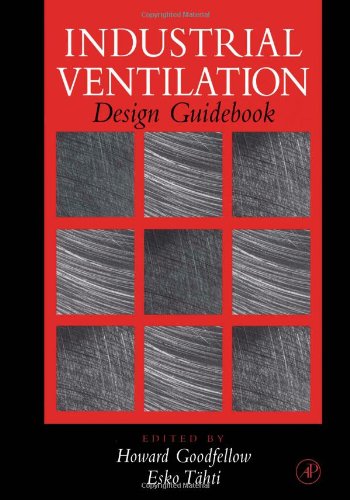
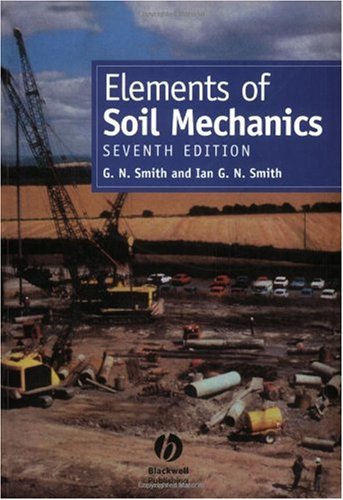
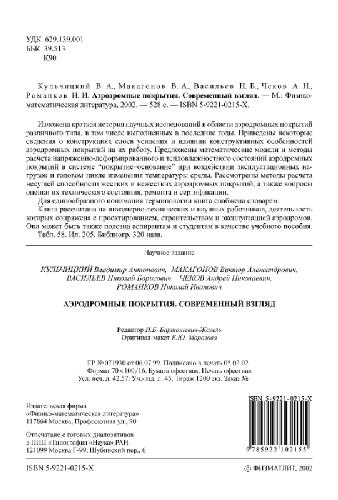

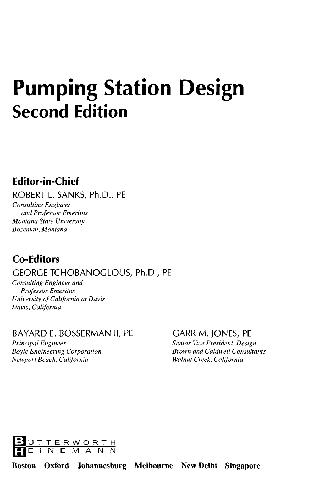
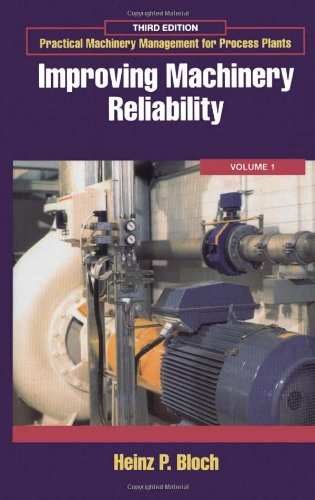
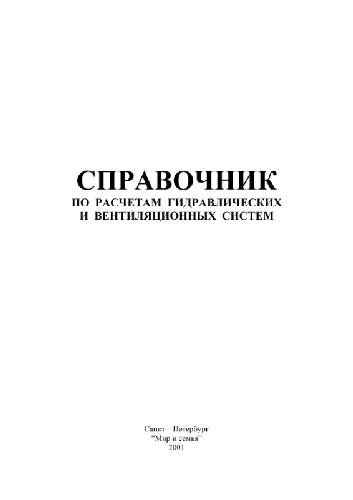
Reviews
There are no reviews yet.